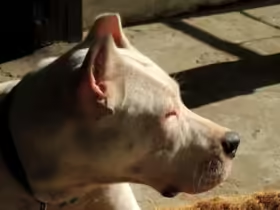All About Dandruff in Cats: Causes, Symptoms, and Treatment
Dandruff in cats, often characterized by white flakes of skin on their fur, can be more than just a cosmetic issue. It can indicate underlying health problems or environmental factors affecting your feline friend. Understanding the causes, recognizing the symptoms, and knowing how to treat dandruff are essential for keeping your cat’s coat and skin healthy.
What Is Dandruff?
Dandruff is the result of the shedding of dead skin cells that have clumped together, often due to an imbalance in the skin’s natural oil production. While a small amount of dandruff can be normal, excessive flaking can indicate an underlying issue that requires attention.
Causes of Dandruff in Cats
Several factors can contribute to dandruff in cats:
- Dry Skin:
- Environmental Factors: Dry air, especially in winter, can lead to dry skin and dandruff. Central heating and low humidity can exacerbate this condition.
- Dehydration: Inadequate water intake can lead to dry, flaky skin.
- Poor Diet:
- Nutritional Deficiencies: A lack of essential fatty acids, vitamins, and minerals in your cat’s diet can affect skin health and lead to dandruff.
- Allergies:
- Food Allergies: Sensitivities to certain ingredients in your cat’s food can cause skin issues, including dandruff.
- Environmental Allergies: Pollen, dust mites, or other allergens can irritate the skin and lead to flaking.
- Parasites:
- Fleas: Flea infestations can cause itching, inflammation, and dandruff.
- Mites: Certain mites, such as those causing ear mites, can also lead to skin issues and dandruff.
- Skin Conditions:
- Dermatitis: Inflammation of the skin, due to various causes, can result in dandruff.
- Fungal Infections: Fungal conditions like ringworm can cause flaky skin and dandruff.
- Obesity:
- Reduced Grooming: Overweight cats may have difficulty grooming themselves properly, leading to a buildup of dead skin cells and dandruff.
- Underlying Health Issues:
- Hormonal Imbalances: Conditions such as hypothyroidism or diabetes can affect skin health and contribute to dandruff.
Symptoms of Dandruff in Cats
When your cat has dandruff, you may notice:
- White Flakes: Small, white flakes on the fur or skin, particularly on the back, shoulders, and tail.
- Itching and Scratching: Your cat may scratch or groom excessively due to itchy skin.
- Dry or Oily Skin: The skin may appear dry and flaky or oily and greasy, depending on the underlying cause.
- Dull Coat: Affected fur may lose its luster and appear dull or unhealthy.
- Redness and Inflammation: In more severe cases, the skin may become red, inflamed, or irritated.
Diagnosing Dandruff in Cats
To accurately diagnose the cause of dandruff, your veterinarian may:
- Perform a Physical Examination: To assess the extent of dandruff and examine your cat’s skin and coat.
- Review Medical History: Discuss your cat’s diet, environment, grooming habits, and any recent changes in health.
- Conduct Diagnostic Tests:
- Skin Scraping or Biopsy: To check for parasites, infections, or other skin conditions.
- Blood Tests: To identify underlying health issues or nutritional deficiencies.
- Assess Diet and Environment: Evaluate your cat’s diet and living conditions to identify potential contributing factors.
Treating Dandruff in Cats
Treatment for dandruff depends on its underlying cause. Here are some common approaches:
- Improve Diet:
- Balanced Nutrition: Ensure your cat’s diet is rich in essential fatty acids, vitamins, and minerals to support healthy skin.
- Hydration: Ensure your cat has access to fresh water to prevent dehydration.
- Enhance Grooming:
- Regular Brushing: Brush your cat regularly to remove dead skin cells and distribute natural oils evenly.
- Proper Bathing: Use a cat-specific, gentle shampoo if recommended by your vet to help manage skin issues.
- Treat Allergies:
- Dietary Changes: Switch to a hypoallergenic or limited-ingredient diet if food allergies are suspected.
- Environmental Control: Reduce exposure to environmental allergens by maintaining a clean living space.
- Address Parasites:
- Flea and Tick Prevention: Use veterinarian-recommended flea and tick preventatives to manage infestations.
- Mite Treatments: Follow your vet’s recommendations for treating mites or other parasites.
- Manage Skin Conditions:
- Medications: Your vet may prescribe topical or oral medications to treat fungal infections, dermatitis, or other skin conditions.
- Moisturizers: Apply vet-approved moisturizers or topical treatments to soothe and hydrate the skin.
- Improve Environment:
- Humidity Control: Use a humidifier to maintain adequate moisture levels in your home, especially in dry climates.
- Clean Bedding: Regularly wash your cat’s bedding and living areas to reduce allergens and irritants.
Preventing Dandruff in Cats
To help prevent dandruff:
- Regular Grooming: Establish a grooming routine that includes brushing and occasional baths, if necessary.
- Balanced Diet: Feed your cat a high-quality, balanced diet that supports overall health and skin condition.
- Hydration: Ensure your cat drinks enough water to stay hydrated.
- Regular Vet Checkups: Schedule routine veterinary visits to monitor your cat’s health and address any emerging issues.
- Maintain a Clean Environment: Keep your cat’s living area clean and free from dust and allergens.











Leave a Reply